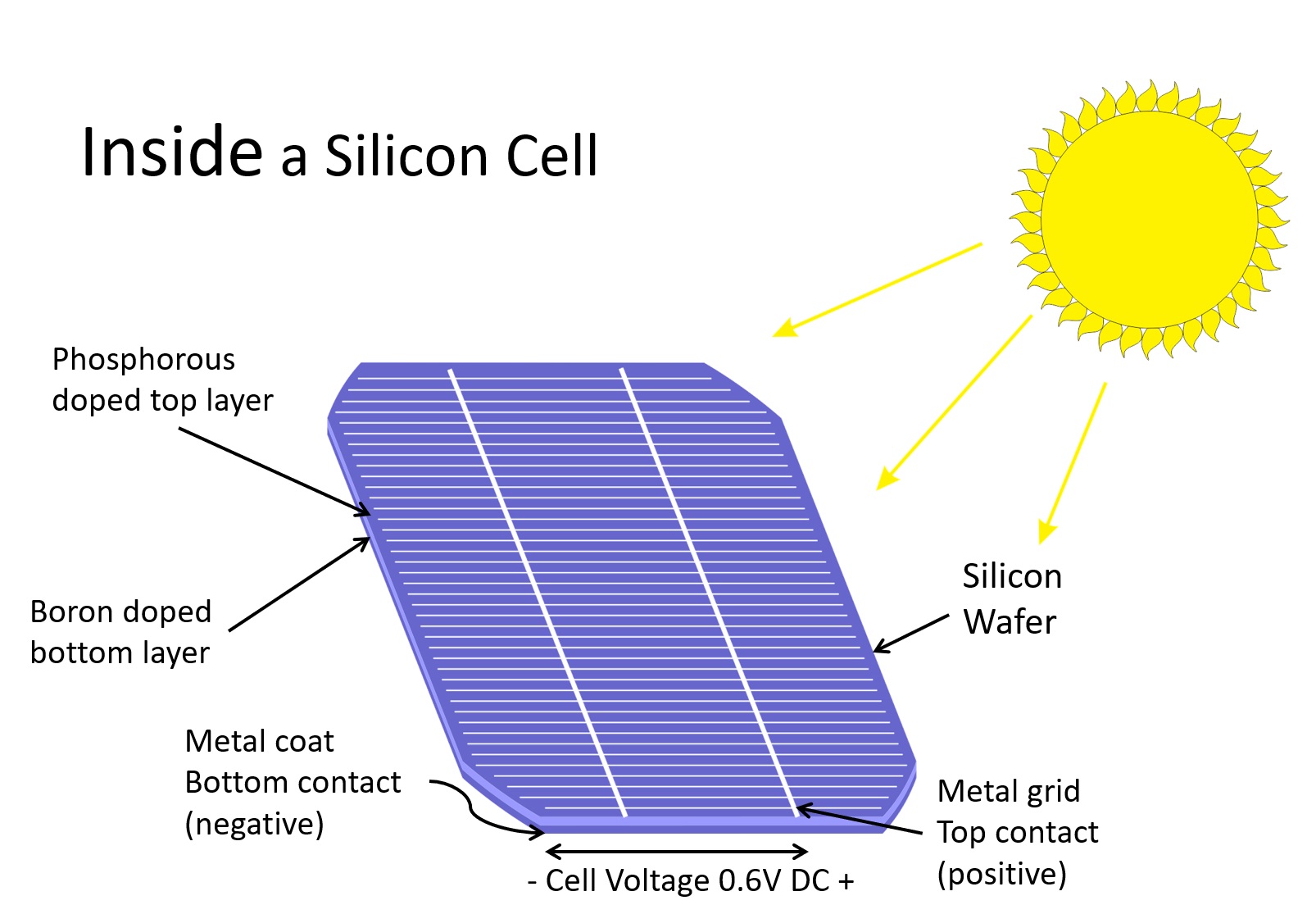Solar Photovoltaic Systems
Solar photovoltaic (PV) systems capture the sun’s energy using photovoltaic cells.
Solar PV cells are made from layers of semi-conducting material, usually silicon. When light shines on the cell it creates an electric field across the layers. The stronger the sunshine, the more electricity is produced, but the PV cells don’t need direct sunlight to work – they can still generate some electricity on a cloudy day.

Cells are grouped together in panels or modules that can either be mounted on a roof or on the ground. In the case of the Meadow Blue solar scheme, the panels will be mounted on steel frames sitting on shallow piles driven into the ground. Since solar PV convert sunlight into DC electricity, inverters are
used to convert this into high-voltage AC electricity, which is then connected to the local distribution network. The solar scheme at Merston will be connected to the Scottish and Southern Energy Power Distribution’s network via a 33kV underground cable to the existing substation at Rose Green.
